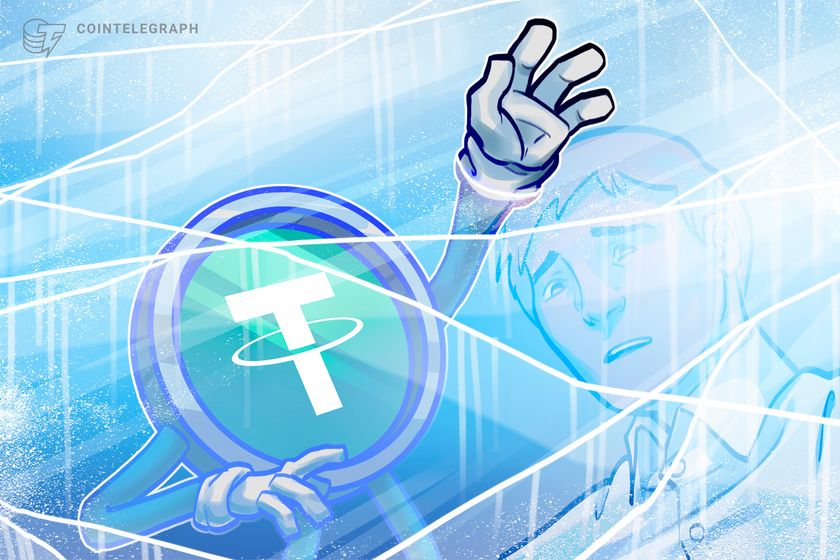India’s Department of Economic Affairs’ consultation paper is expected to be a watershed moment for crypto regulation in the country, potentially setting the stage for future legislation.
Canada lags with stablecoin approach, but there’s room to catch up
The slow adoption of stablecoins in Canada has some local crypto industry observers concerned that the country is falling behind.The Canadian Securities Administrators (CSA) classified stablecoins as “securities and/or derivatives” in December 2022 after the FTX debacle that shook markets and turned many lawmakers against the crypto industry.Regulating stablecoins as a security has seen few local stablecoin issuers arise, but in the United States and the European Union, softening regulations have seen significant growth in the stablecoin market. This makes Canada, observers say, less competitive with other jurisdictions. Of particular concern is the perceived gap in peer-to-peer (P2P) payments in Canada, which stablecoins are uniquely qualified to fill. Stablecoins globally have grown significantly over the last five years. Source: DefiLlamaLocal law constrains stablecoin growth and threatens dollarIn 2022, as the crypto market reeled from the collapse of FTX and the implosion of the Terra stablecoin system, regulators worldwide began to look more critically at the crypto space. In Canada, the CSA updated regulations for crypto exchanges and brought stablecoins under its purview, classifying them as securities/derivatives. This hasn’t been a popular decision with Canada’s crypto industry.Morva Rohani, founding managing director of the Canadian Web3 Council, told Cointelegraph that the CSA’s case-by-case basis for considering stablecoin issuers and the lack of a federal framework make for a “patchwork” regulatory regime.“Canada’s reliance on securities law to regulate payment stablecoins introduces significant legal and operational uncertainty,” she said.Tanim Rasul, chief operating officer of Canadian crypto exchange NDAX, said that the CSA “got it wrong,” stating that other regulatory frameworks, like the EU’s Markets in Crypto-Assets (MiCA) law, were more appropriate. “I would just say, look at MiCA, look at the way they’re approaching stablecoins. It’s a payment instrument. It should be regulated as such,” he told a crowd at the Blockchain Futurist Conference in Toronto on May 13. It’s not just the EU. Singapore and the UAE have also introduced regulatory frameworks for stablecoins, and US senators are optimistic they will pass a stablecoin law by May 26.Related: What are the next steps for the US stablecoin bill?Rohani said Canada is “out of step with leading global jurisdictions […] which have adopted tailored, prudential frameworks that recognize stablecoins as payment instruments.”This lack of alignment with other, more pro-stablecoin jurisdictions could have negative effects for the Canadian dollar (CAD), some worry.Som Seif, founder of Canadian investment firm Purpose Financial, said that the proliferation of other major stablecoins, mostly denominated in the US dollar, could threaten the use of the loonie (a nickname for the Canadian dollar) at home. “If Canada does not create the regulatory framework and environment that encourages the development of CAD stablecoins, consumers and businesses will default to using USD-pegged alternatives, eroding the relevance of CAD in global markets,” he said.Stablecoins provide cheaper P2P payments but reputation is also a roadblockMembers of the Canadian crypto industry have stated that stablecoins have a role to play in the country as well, given the purported lack of P2P payment networks available in the country. Speaking to Cointelegraph on May 13, Coinbase Canada CEO Lucas Matheson said, “It’s really important that we have a stablecoin for Canadians.” He said that the only options currently open were wire transfers, which “cost $45 and take 45 minutes of paperwork.” Rohani said that Interac e-Transfer, a Canadian funds transfer service, “remains the primary domestic P2P rail, operating through banks and credit unions.”Related: Stablecoins seen as ideal fit for real-time collateral managementCanada does have apps like PayPal and Wise, which support international P2P transfers, but those often come with high commissions and slow settlement times compared to stablecoins.Rohani said that while some crypto platforms allow for P2P transfers, they’re not widely used due to a lack of integration into mainstream financial services. Demand for more and different digital payment methods is growing in Canada, according to the 2024 digital payments report from Payments Canada, the owner and operator of Canada’s payment clearing and settlement infrastructure.But that demand may not translate directly into stablecoins. Crypto’s “journey towards financial integration among Canadians remains a distant prospect,” the report reads. Some 91% of Canadians have never used crypto as a payment. Ease of use and security were top priorities for international payment users. Source: Payments CanadaPayments Canada attributes the lack of interest to the assets being perceived as the “least secure payment method among Canadians compared to alternatives such as cash, credit cards, cheques, wire transfers and PayPal.”Even in the context of a central bank digital currency, which the crypto industry generally regards as a less favorable option to private, fiat-denominated stablecoins, interest just isn’t there. The survey found that 85% of respondents “did not envision themselves using a digital Canadian dollar and preferred their existing payment methods.”Is PM Carney pro-crypto?If more tailor-made regulations could integrate stablecoins with the mainstream payment options Canadians are comfortable with, it would still take a concerted effort from policymakers in Ottawa, where the Liberals have just won the federal elections.The crypto industry had cause for doubt. Liberal Prime Minister Mark Carney has previously expressed skepticism about cryptocurrency. In a speech as Governor of the Bank of England, he said they had failed as money. Still, he acknowledged stablecoins have a role to play in retail and wholesale payments. He said in 2021 that stablecoins should have access to central bank balance sheets — but only if strong protections were in place. “There’s been two systemic crises in money funds in little more than a decade […] In baseball, it’s three strikes and you’re out. In cricket, it’s only the equivalent of one. For systemic payment systems, one is too many,” Carney stated.Kohani said, “With Mark Carney at the helm of the Liberal Party, we anticipate a pragmatic but regulation-first approach to crypto and stablecoins.”While his previous openness toward stablecoins suggests he’s open to the technology, he also “emphasizes the need for regulation, oversight and safeguards.”Another Liberal term, per Kohani, will likely mean the CSA continues to lead enforcement but could result in broader policy work, including a framework on stablecoins, “particularly if positioned as a tool for payments modernization and maintaining the relevance of the Canadian dollar.” Magazine: Danger signs for Bitcoin as retail abandons it to institutions: Sky Wee




